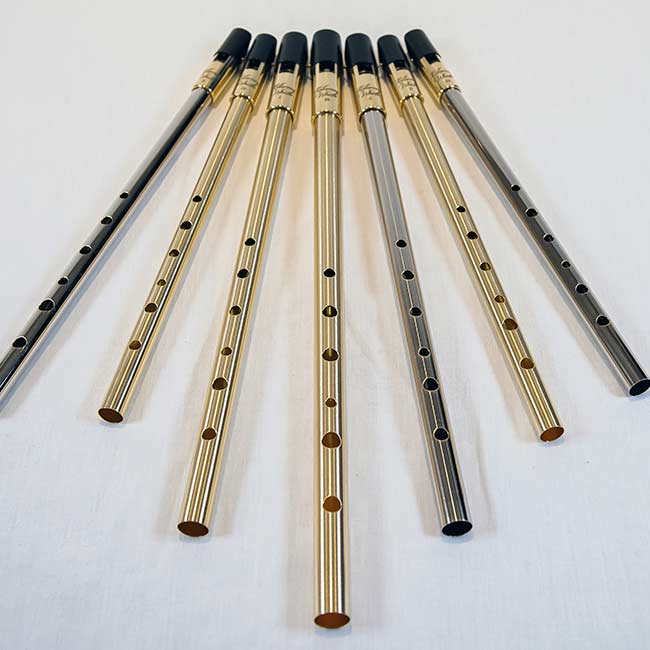



The History of the Tin Whistle
The tin whistle is also called the Irish Whistle, Penny Whistle, Feadóg Stáin, and English flageolet. The tin whistle, in its modern form, is from a wider family of fipple flutes, which have been seen in many forms and cultures throughout the world. Almost all primitive cultures had a type of fipple flute and is most likely the first pitched flute-type instrument in existence. A possible Neanderthal fipple flute from Slovenia dates from approx 60,000 B.C. Written sources that describe a fipple-type flute include the Roman and Greek aulos and tibia.
In the early Middle Ages peoples of northern Europe were playing the instrument: Irish Brehon Law describes a flute-like instrument. Fragments of 12th-century Norman bone whistles have been found in Ireland and an intact 14 cm Tusculum clay whistle from the 14th century has been found in Scotland. In the 17th century whistles were called flageolets; a term to describe a whistle with a French-made fipple and such instruments are linked to the development of the English flageolet, French flageolet and recorders of the renaissance and baroque period.
Gaining popularity as a folk instrument in the early 19th century, the Tin Whistle is now an integral part of several folk traditions. The tin whistle is most popular in Irish Traditional Music. Whistlers such as Mary Bergin, Paddy Moloney, Sean Potts, Micho Russell, Joanie Madden and Sean Ryan have played an important role in establishing the tin whistle as an important main-stream Irish Traditional Music instrument.
The Modern Tin Whistle
The most common whistles today are made of brass, or nickel-plated brass tubing, with a mouthpiece. Generation, Feadóg, Oak, Acorn, Waltons, and other brands fall in this category. These instruments are inexpensive as they are mass produced. They are ideal for children starting the whistle. As a whistler improves, and becomes more discerning regarding tone, tuning, and the overall quality of their instrument, they usually need a higher quality instrument to bring out the best in their playing.
In recent years a number of instrument builders have started producing high quality, hand-made tin whistles, which can cost hundreds of dollars each — expensive in comparison to cheap whistles, but nevertheless cheaper than most other instruments. These companies are typically either a single individual or a very small group of craftsmen who work closely together. These instruments are distinguished from the inexpensive whistles in that each whistle is individually manufactured and “voiced” by a skilled person rather than made in a factory. These include the Burke Whistle, Sindt Whistle, Chieftain Whistle, Dixon Whistle and of course the Killarney Whistle. Each of these has their own unique quality and a whistler must decide what is right for them personally.
What our customers think of the Killarney Whistle
EVERYTHING A WHISTLE SHOULD BE! Flawless workmanship with precision like a Swiss watch. Just the right amount of breath, just the right amount of chiff, easily glides through both octaves. Comfortable to play. Physically heavy on the top but this does not impair playing in any way - just something to get used to. I love the sound of brass whistles and this one is amazing! Love it. Love it. Love it!





